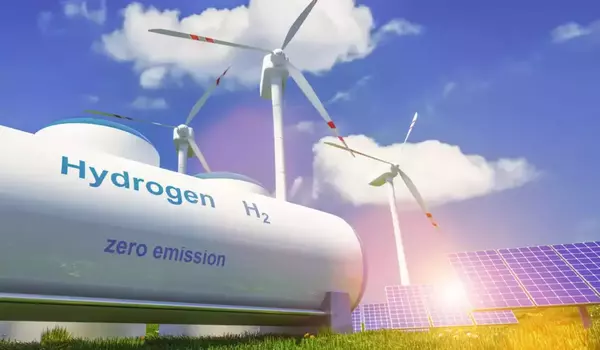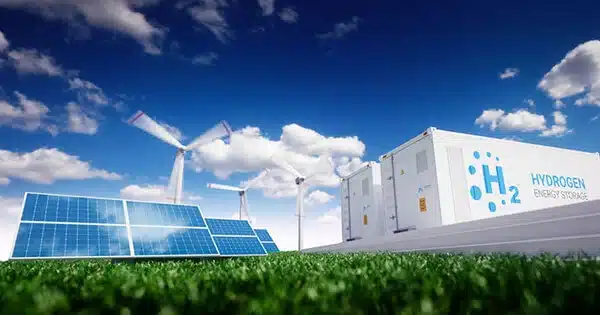Solar power-powered hydrogen production is a possible path for expanding renewable energy technologies. When utilised in fuel cells or combustion engines, hydrogen is considered a clean energy carrier since it creates only water vapour, making it an environmentally benign alternative to typical fossil fuels.
A new type of solar panel created at the University of Michigan has achieved 9% efficiency in turning water into hydrogen and oxygen, simulating an important phase in natural photosynthesis. Outside, it marks a significant advancement in technology, being roughly ten times more efficient than previous solar water-splitting efforts.
The main advantage, though, is that it lowers the cost of sustainable hydrogen. This is made possible by downsizing the semiconductor, which is normally the most expensive component of the device. The self-healing semiconductor developed by the scientists can resist focused light equivalent to 160 suns.
Humans now create hydrogen from the fossil fuel methane, consuming a significant amount of fossil energy in the process. Plants, on the other hand, use sunshine to extract hydrogen atoms from water. As mankind attempts to lessen its carbon footprint, hydrogen is appealing as a standalone fuel as well as a component in sustainable fuels derived from recovered carbon dioxide. It is also required in various chemical operations, including as the production of fertilisers.
We reduced the size of the semiconductor by more than 100 times compared to some semiconductors only working at low light intensity. Hydrogen produced by our technology could be very cheap.
Peng Zhou
“In the end, we believe that artificial photosynthesis devices will be much more efficient than natural photosynthesis, which will provide a path toward carbon neutrality,” said Zetian Mi, U-M professor of electrical and computer engineering who led the study reported in Nature.
The outstanding result comes from two advances. The first is the ability to concentrate the sunlight without destroying the semiconductor that harnesses the light.
“We reduced the size of the semiconductor by more than 100 times compared to some semiconductors only working at low light intensity,” said Peng Zhou, U-M research fellow in electrical and computer engineering and first author of the study. “Hydrogen produced by our technology could be very cheap.”

The second method involves using both the higher energy part of the sun spectrum to split water and the lower energy part of the spectrum to create heat that promotes the reaction. The magic is achieved by a semiconductor catalyst that improves with usage, resisting the degradation that such catalysts typically endure when used to drive chemical processes with sunlight.
It can thrive in high temperatures that are punitive to computer chips, in addition to handling high light intensities. Higher temperatures hasten the water splitting process while also encouraging hydrogen and oxygen to remain separate rather than renewing their bonds and creating water again. Both of these aided the team in obtaining more hydrogen.
Zhou used a lens the size of a home window to focus sunlight onto an experimental panel only a few inches across for the outside experiment. The semiconductor catalyst was covered in a layer of water within that panel, bubbling with the hydrogen and oxygen gases it separated.
The catalyst is constructed of nanostructures of indium gallium nitride grown on a silicon surface. The light is captured by the semiconductor wafer, which converts it into free electrons and holes – positively charged spaces left behind when electrons are liberated by the light. The nanostructures are riddled with tiny metal balls 1/2000th of a millimetre in diameter that use electrons and holes to assist steer the reaction.
A simple insulating layer on top of the panel keeps the temperature at a toasty 75 degrees Celsius, or 167 degrees Fahrenheit, warm enough to drive the reaction while remaining cool enough for the semiconductor catalyst to function properly. The outdoor version of the experiment, which had less consistent sunlight and temperature, obtained a 6.1% efficiency in converting solar energy into hydrogen fuel. Indoors, however, the system reached 9% efficiency.
The team plans to tackle the next obstacles by increasing efficiency and producing ultrapure hydrogen that can be directly fed into fuel cells.















